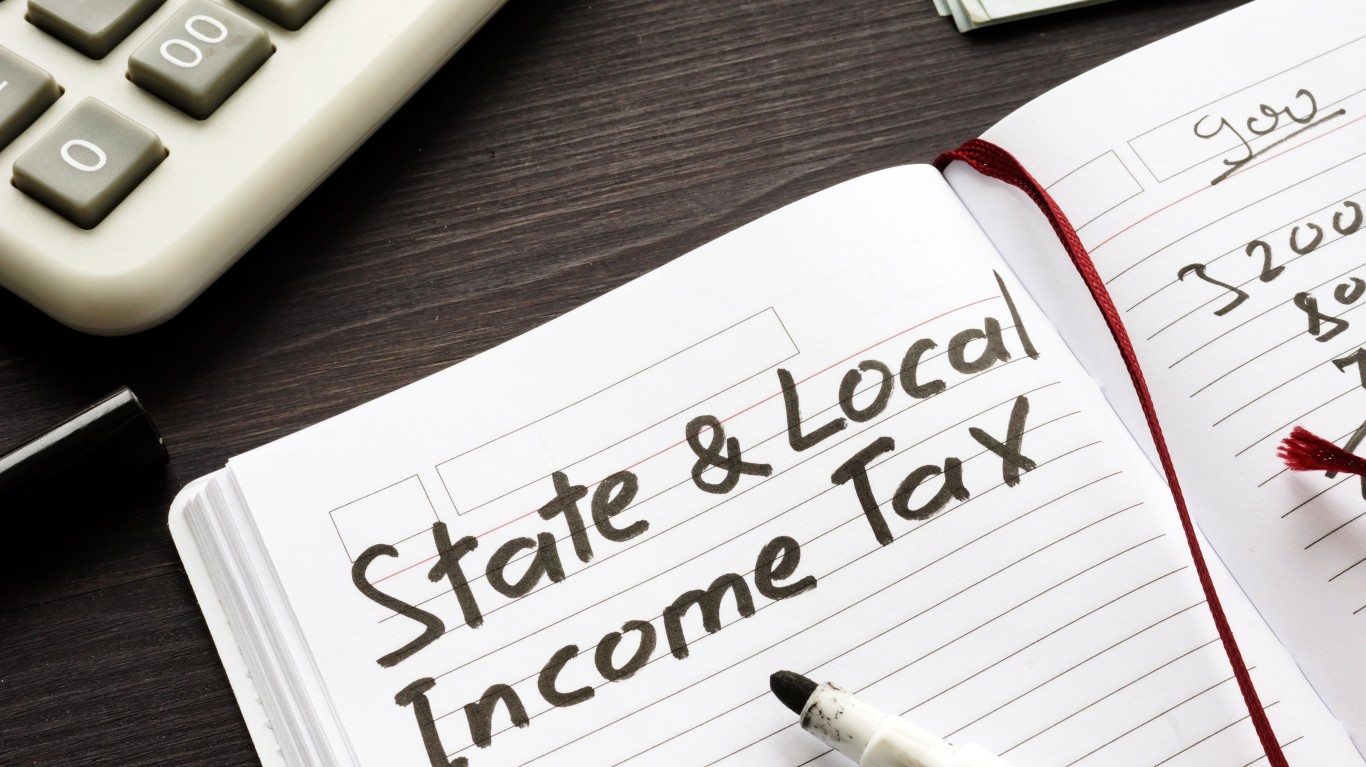
No matter where you live in the United States, your federal tax burden is the same as for all other U.S. citizens with roughly the same household earned income. For taxpayers earning a median household income of around $70,800, your federal tax bill will be nearly $11,000, or about 15.5% of your income. (Here are the surprising things the government knows about you.)
Once you have satisfied the federal maw, however, you are left to contend with state and local taxes. The tax burdens vary considerably from state to state, with some median households paying a lot more and others paying a lot less than the 10.79% average.
Here is the good news for some Americans. Residents of nine states (Alaska, Florida, Nevada, New Hampshire, South Dakota, Tennessee, Texas, Washington, and Wyoming) pay no state income taxes. Five states (Alaska, Delaware, Montana, New Hampshire, and Oregon) do not levy sales taxes.
Now the less-good news. There are no states that do not impose property taxes, nor are there any states that do not charge excise taxes that are paid by producers and vendors but passed on to consumers. Two obvious excise taxes are gasoline taxes and taxes on tobacco products. Vehicle registration taxes are a fixture in every state.
These state and local taxes add 6% to 15% to your total tax bill, according to a study released by WalletHub earlier this month. The following interactive map shows the annual state and local tax hit on the median household income in every state.
<iframe src=”https://cdn.wallethub.com/wallethub/embed/2416/taxpayer1-2023.html” width=”556″ height=”347″ frameBorder=”0″ scrolling=”no”></iframe><div style=”width:556px;font-size:12px;color:#888;”>Source: <a href=”https://wallethub.com/edu/best-worst-states-to-be-a-taxpayer/2416″>WalletHub</a></div>
The five states with the highest level of state and local taxes are:
- Illinois: 15.05% in state and local taxes; 39.83% higher than the U.S. average
- Connecticut: 14.8% in state and local taxes; 37.47% higher than the U.S. average
- New York: 14.23%, in state and local taxes; 32.22% higher than the U.S. average
- Pennsylvania: 13.92% in state and local taxes; 29.3% higher than the U.S. average
- Kansas: 13.57% in state and local taxes; 26.06% higher than the U.S. average
The five states with the lowest level of state and local taxes are:
- Alaska: 6.05% in state and local taxes; 43.82% less than the U.S. average
- Delaware: 6.34% in state and local taxes; 41.14% less than the U.S. average
- Montana: 7.12% in state and local taxes; 33.88% less than the U.S. average
- Nevada: 7.79% in state and local taxes; 27.64% less than the U.S. average
- Wyoming: 8.06% in state and local taxes; 25.1% less than the U.S. average
On average, red states have an average rank of 27.88, compared to the blue states’ average of 24.04. Interestingly, in the largest of the blue states, California, residents pay 16.64% less than the national average in state taxes, while in Texas, the largest of the red states, residents pay 18.21% more than the national average. In Florida, the second largest red state, residents pay 23.74% less than the national average while in New York, the second largest of the blue states, residents pay 32.22% more than the national average.
Thank you for reading! Have some feedback for us?
Contact the 24/7 Wall St. editorial team.
 24/7 Wall St.
24/7 Wall St.



